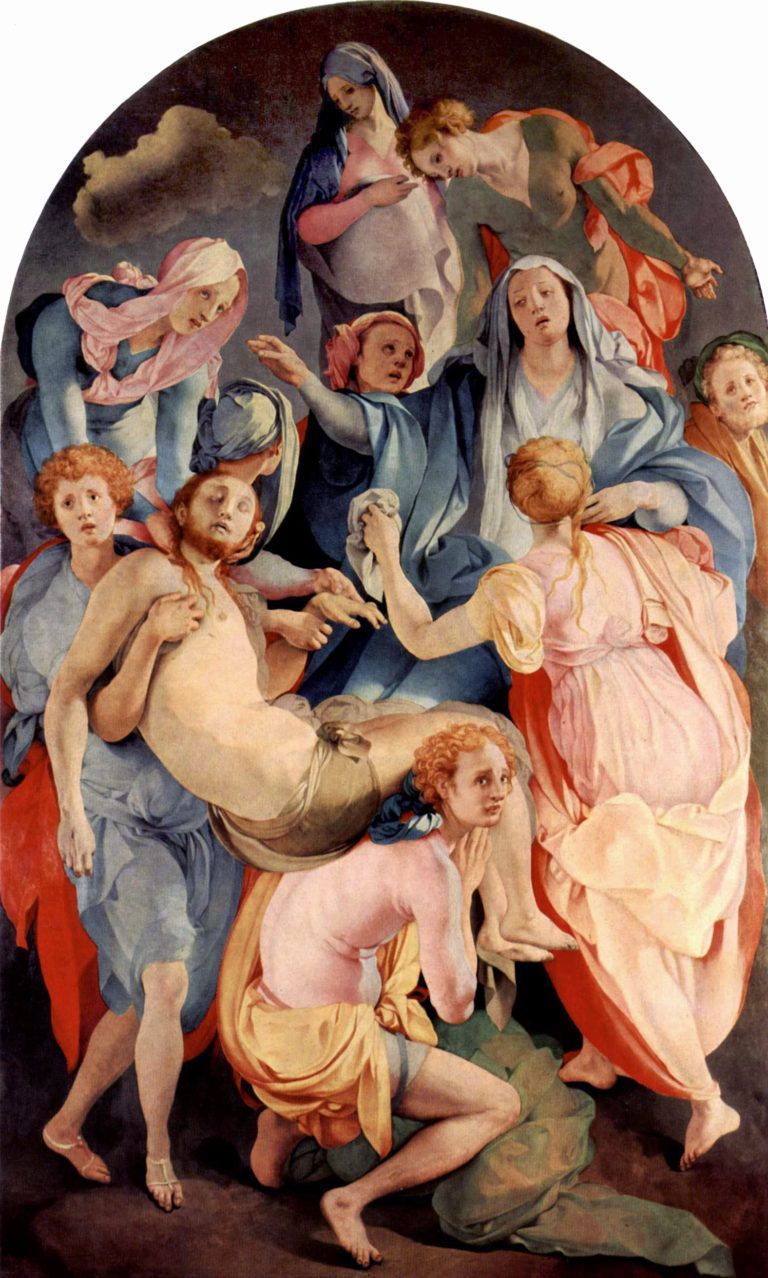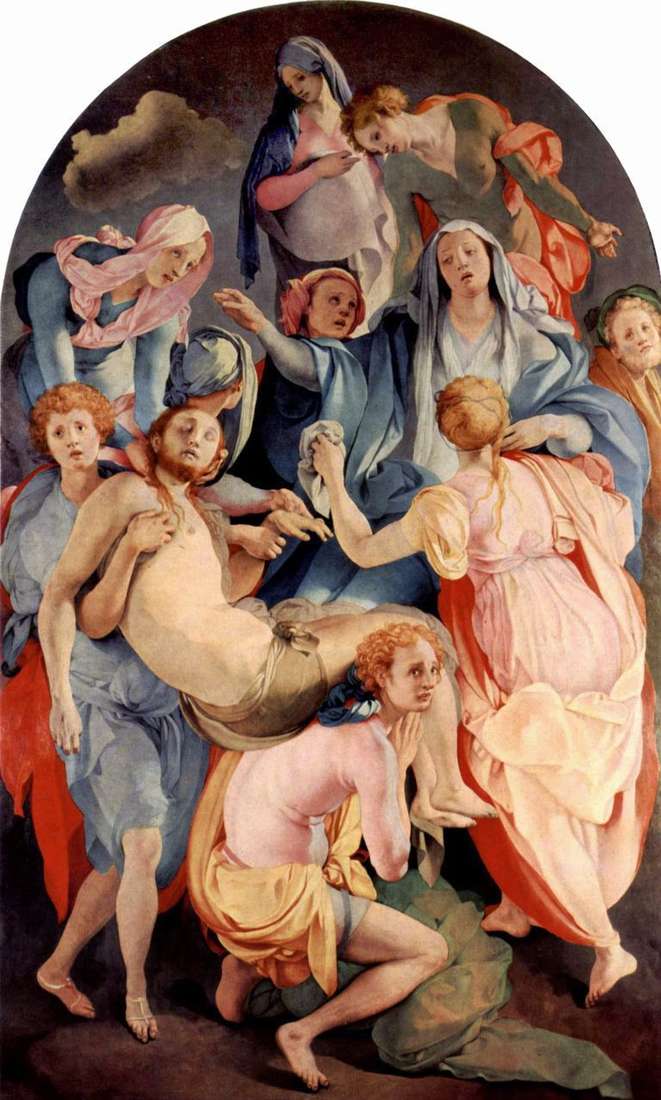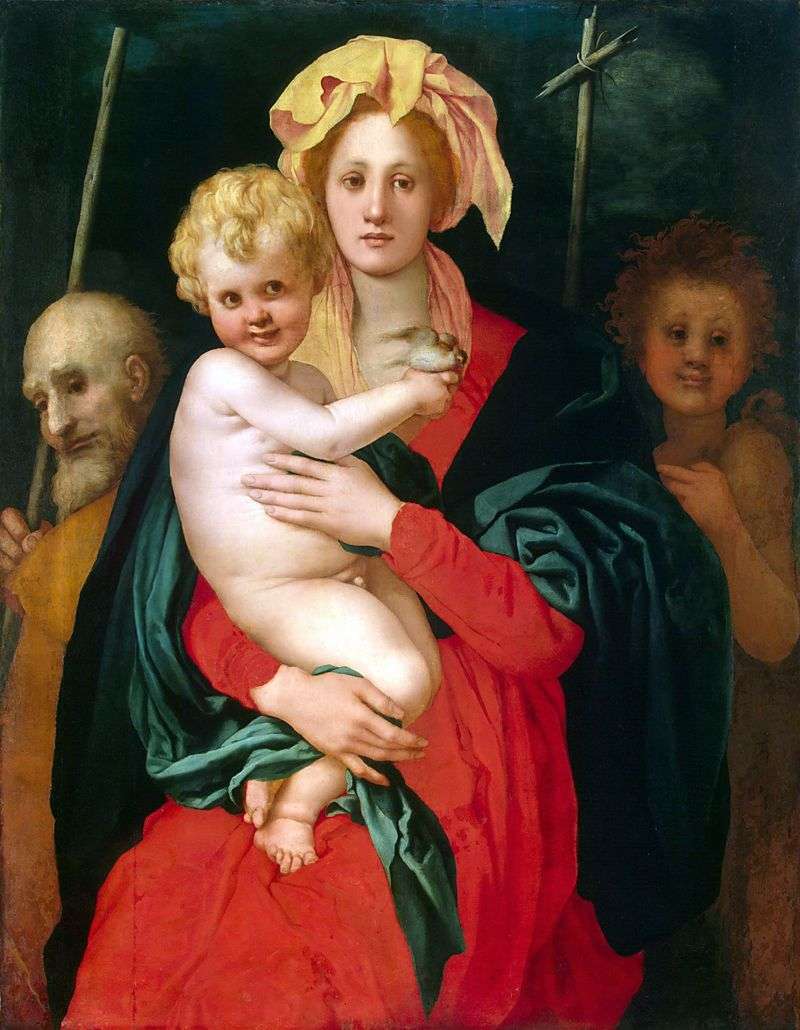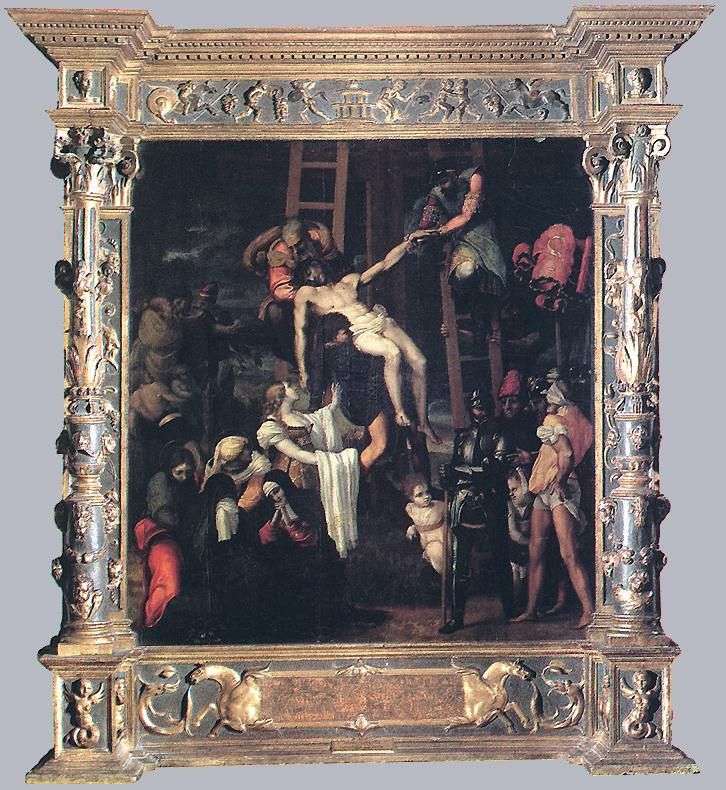
Between the Pitti Palace and Ponte Vecchio is the small church of Santa Felicita. In the church there is the “Descent from the Cross” by the Florentine mannerist of the early 16th century Pontormo, he painted this painting in 1527. Pontormo abandoned the traditional constructions and backgrounds: all the figures seem weightless, as if floating in the air.
High emotional tension and drama, the use of exquisite iridescent paints make “The Descent from the Cross” one of the greatest works of Pontormo. Pontormo, Jacopo da, Italian artist, one of the founders of the trend of the Mannerist art of the Renaissance. Born in Pontormo on May 24, 1494 in the family of the painter B. Careucci. He studied mainly in the workshop of Andrea del Sarto – along with Rosso Fiorentino, with whom he collaborated in the early period. He lived mainly in Florence. His first significant work, the frescoes in the church of Santissima Annunziata in Florence, were solved in a harmonically-smooth manner of Sarto, although more emotional.
However, the altar cycle with the story of Joseph in Egypt is full of disturbingly disturbed figures. The personal style of Pontormo, with its refined and graceful pattern and cool color, appears brightly in the pastoral and allegorical paintings of the Villa Medici in Poggio a Caiano. In the frescoes with the Passion of Christ in the Hall of Val d’Ema in Galuzzo, the influence of the Northern Renaissance is evident.
The altar images of the 1520s are completely manististic. The coffin (1526-1528, Church of Santa Felicita, Florence) – with their nervous coloristic and light bursts and contrasts, sometimes deliberately surreal combination of natural environment with speculative symbolism, trembling lines, which would be used by the theme of the theaters, which would be like the pictures of the whole environment, with speculative symbolism, trembling lines, which would be used by the theme of the theaters, which would be used by the theme masters, with a kind of natural environment with speculative symbolism, trembling lines, which would be used by the theme of the theaters, which would be used by the theme of theatrical figures, by the natural environment with the speculative symbolism, the quivering lines, which would be used by the theme of the world, with a deliberately unreal combination of natural environment with speculative symbolism, trembling lines, which would be used by the theme for the whole world. figures and draperies.
During this period, the artist performed several compositions on the cardboards of Michelangelo; the influence of the great master was also reflected in the independent things of Pontormo. Pontormo was also an outstanding portrait painter, who is able to sharply outline the spiritual life of his models, which are usually closed-alone on an impenetrably dark background.
The best of his late frescoes are not preserved and are known only from preparatory drawings. A brilliant draftsman, Pontormo left a significant graphic heritage. In recent years, led an increasingly hermitic lifestyle, secluded in his workshop. Pontormo died in Florence on January 2, 1557.
 Descente de croix – Jacopo Pontormo
Descente de croix – Jacopo Pontormo Descent from the Cross by Fra Beato Angelico
Descent from the Cross by Fra Beato Angelico The Descent from the Cross by Vasily Perov
The Descent from the Cross by Vasily Perov Descenso de la cruz – Jacopo Pontormo
Descenso de la cruz – Jacopo Pontormo Madonna and Child, St. Joseph and John the Baptist by Jacopo Pontormo
Madonna and Child, St. Joseph and John the Baptist by Jacopo Pontormo Portrait of Cosimo Senior Medici by Jacopo Pontormo
Portrait of Cosimo Senior Medici by Jacopo Pontormo Descent from the Cross by Pedro Machuca
Descent from the Cross by Pedro Machuca Adoration of the Magi by Jacopo Pontormo
Adoration of the Magi by Jacopo Pontormo